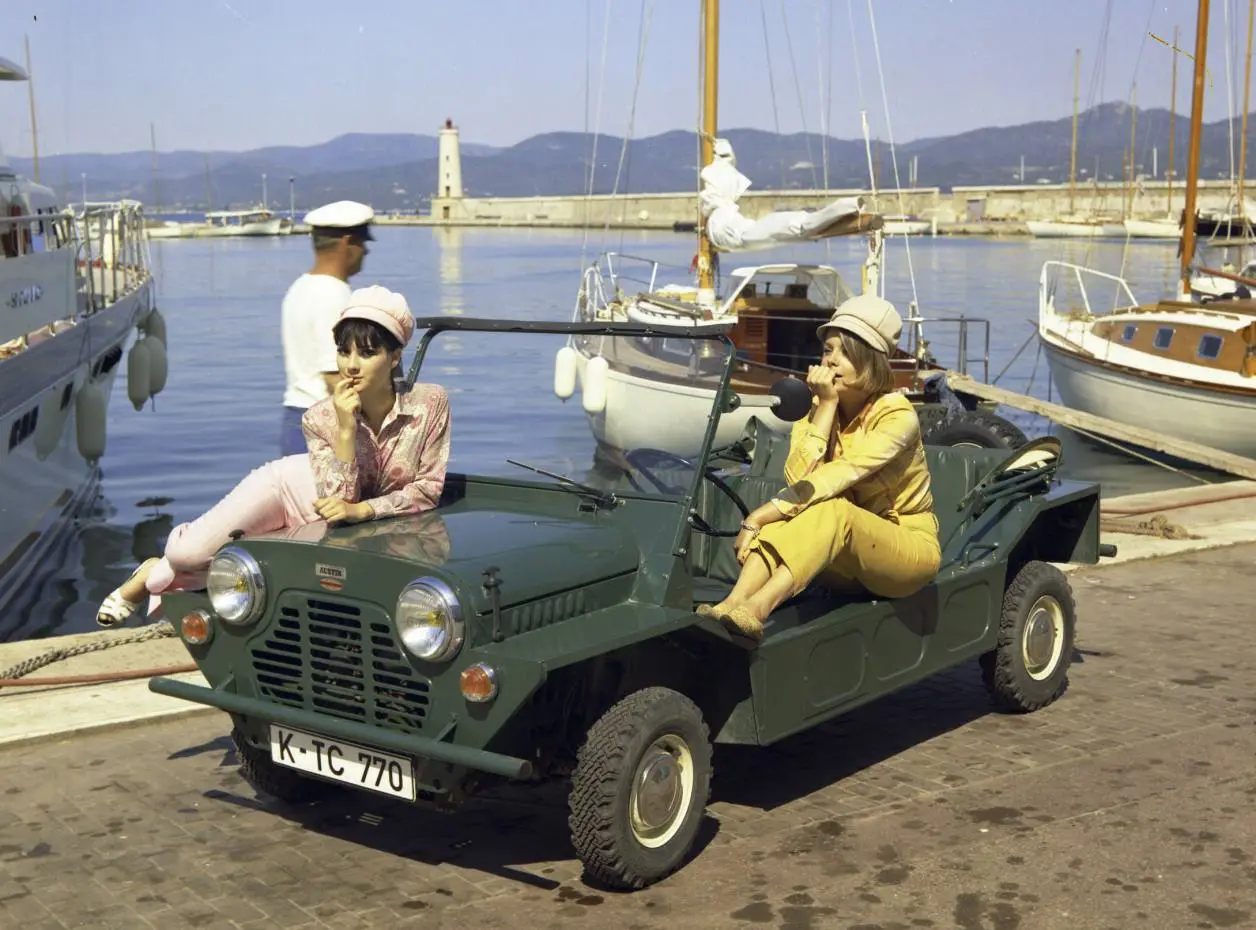
Designed in the late 1950’s by the Austin Mini father Alec Issigonis, the Mini Moke finally became an icon on the Riviera, Australia or even the Caribbean for its fun and also practical side, its robustness and the feeling of freedom that you enjoy whilst driving. Today, faithful to the brand’s origin, Moke teams have also integrated all the current technology a car like this needs to have : a 4-cylinder injection engine, power steering, manual or automatic transmission, waterproof seats, etc.
The Moke is a vehicle based on the Mini designed for the British Motor Corporation (BMC) by Sir Alec Issigonis and John Sheppard. The name comes from “Mini”—the car with which the Moke shares many parts—and “Moke”, which is an archaic dialect term for donkey. The Moke has been marketed under various names including Austin Mini Moke, Morris Mini Moke and Leyland Moke.
The initial design was a prototype for a light military vehicle in the style of the American Jeep, but its small wheels and low ground clearance made it impractical as an off-road vehicle. It was subsequently offered in a civilian version as a low-cost, easily maintained utility vehicle. The Moke finally achieved success as a beach buggy—becoming a popular “cult” vehicle in the Algarve, Seychelles, Australia, the United States and many tropical resorts in the Caribbean. The original Moke used identical engine, transmission and suspension parts from the Mini Van.
The first Mokes were only built at BMC’s Longbridge, Birmingham plant. 14,518 Mokes were produced in the UK between 1964 and 1968, 26,000 in Australia between 1966 and 1981, and 10,000 in Portugal between 1980 and 1993 when production of the Moke ended.
Design and Purpose
- Initial Purpose: The Mini Moke was originally conceived as a small, rugged vehicle for the British military, intended to be air-dropped behind enemy lines. However, its low ground clearance made it unsuitable for rough terrains, so it transitioned to the civilian market.
- Structure: Built on the Mini platform, it retained the Mini’s transverse engine, front-wheel drive layout, and shared many components with the Mini, including its small wheels and suspension.
- Body Style: It has an open, Jeep-like body, minimal roof, and a simplistic, utilitarian design with no doors and removable canvas tops, making it perfect for tropical climates.
Engine and Performance
- Engine: Initially powered by a 0.8-liter, 34 hp engine from the Mini, though later models included slightly more powerful engines.
- Performance: Lightweight with a top speed of around 65 mph (105 km/h). Its simplicity made it easy to handle and maintain.
Civilian Popularity and Uses
- Civilian Appeal: Despite its origins, the Moke became popular as a recreational and beach car in places like the Caribbean, Australia, and the Mediterranean. Its simple, open design and ease of use made it well-suited for warm climates and sandy terrain.
- Utility Vehicle: Used in resorts, on islands, and in towns for easy transportation. Its small size and maneuverability also made it ideal for city use.
Variants and Legacy
- Australian Mokes: Produced in Australia from the late 1960s until 1981, these had unique features like a galvanized body and options for larger engines, making them popular in Australian beach communities.
- Portuguese Mokes: Production moved to Portugal from 1980 until the Moke’s discontinuation in 1993.
- Modern Revival: The Moke brand has seen several revivals, with electric versions now available, capturing the original’s spirit of fun, simplicity, and beach-friendly appeal.

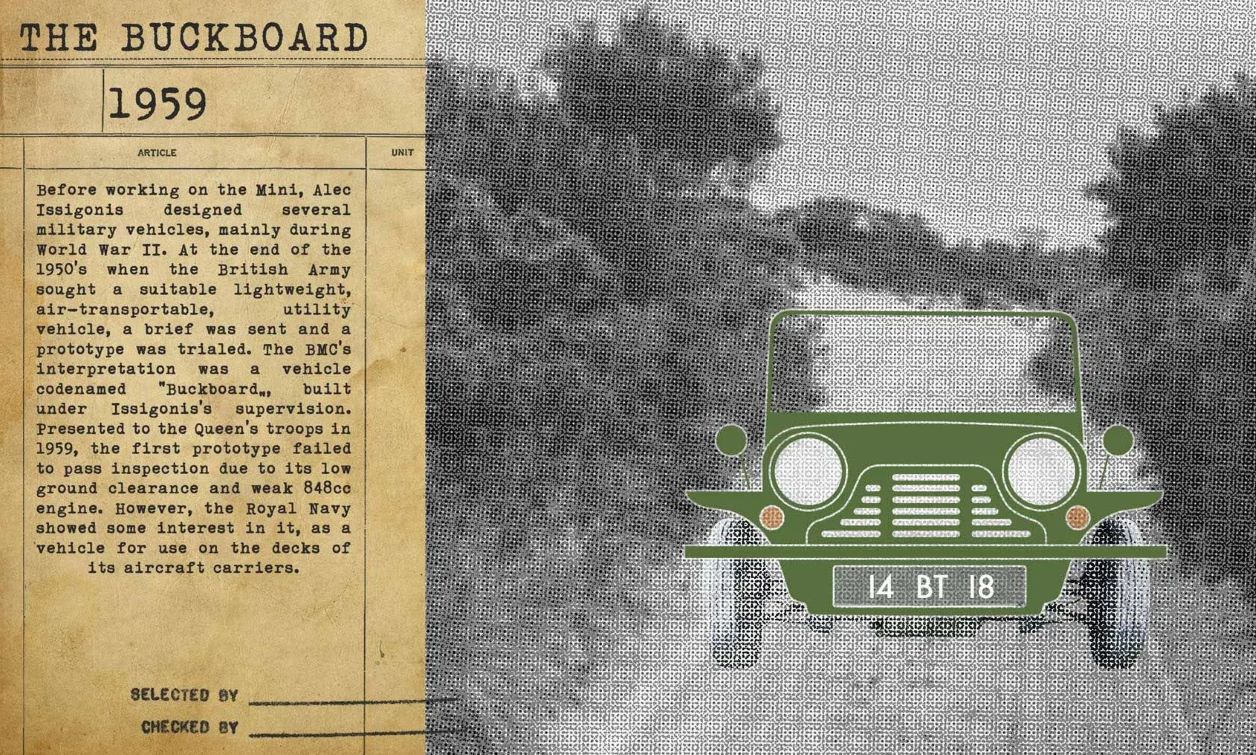
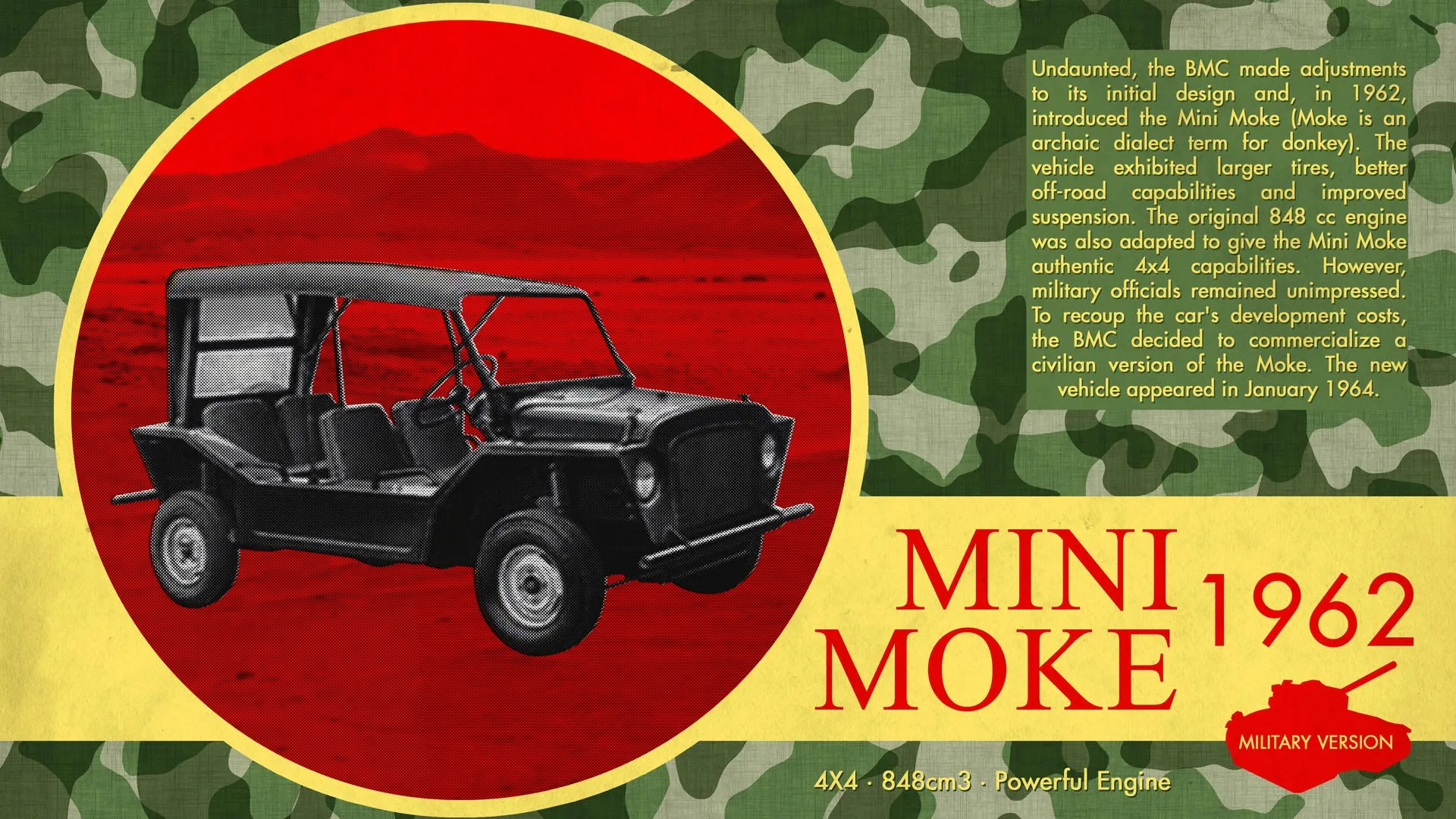
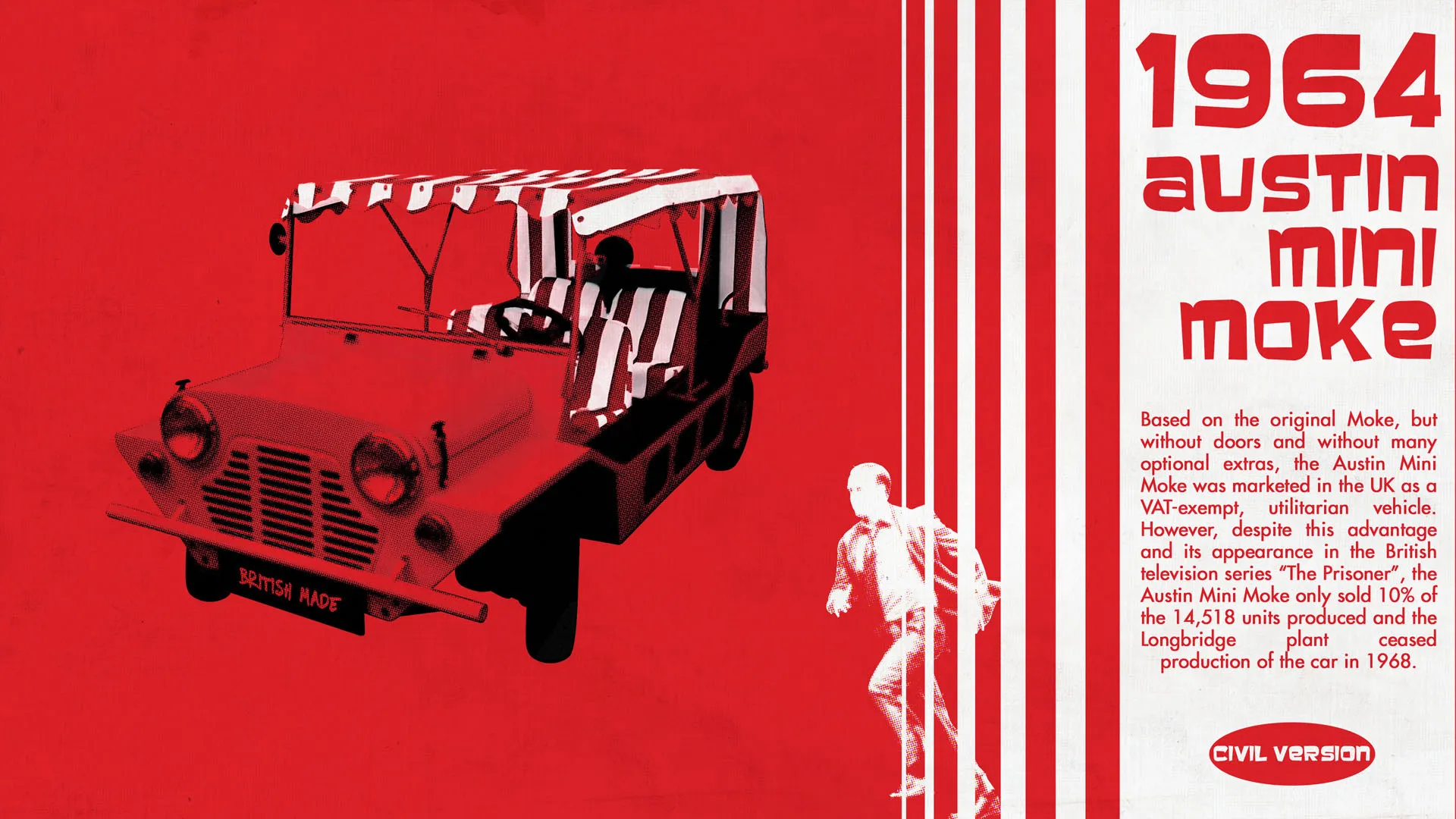
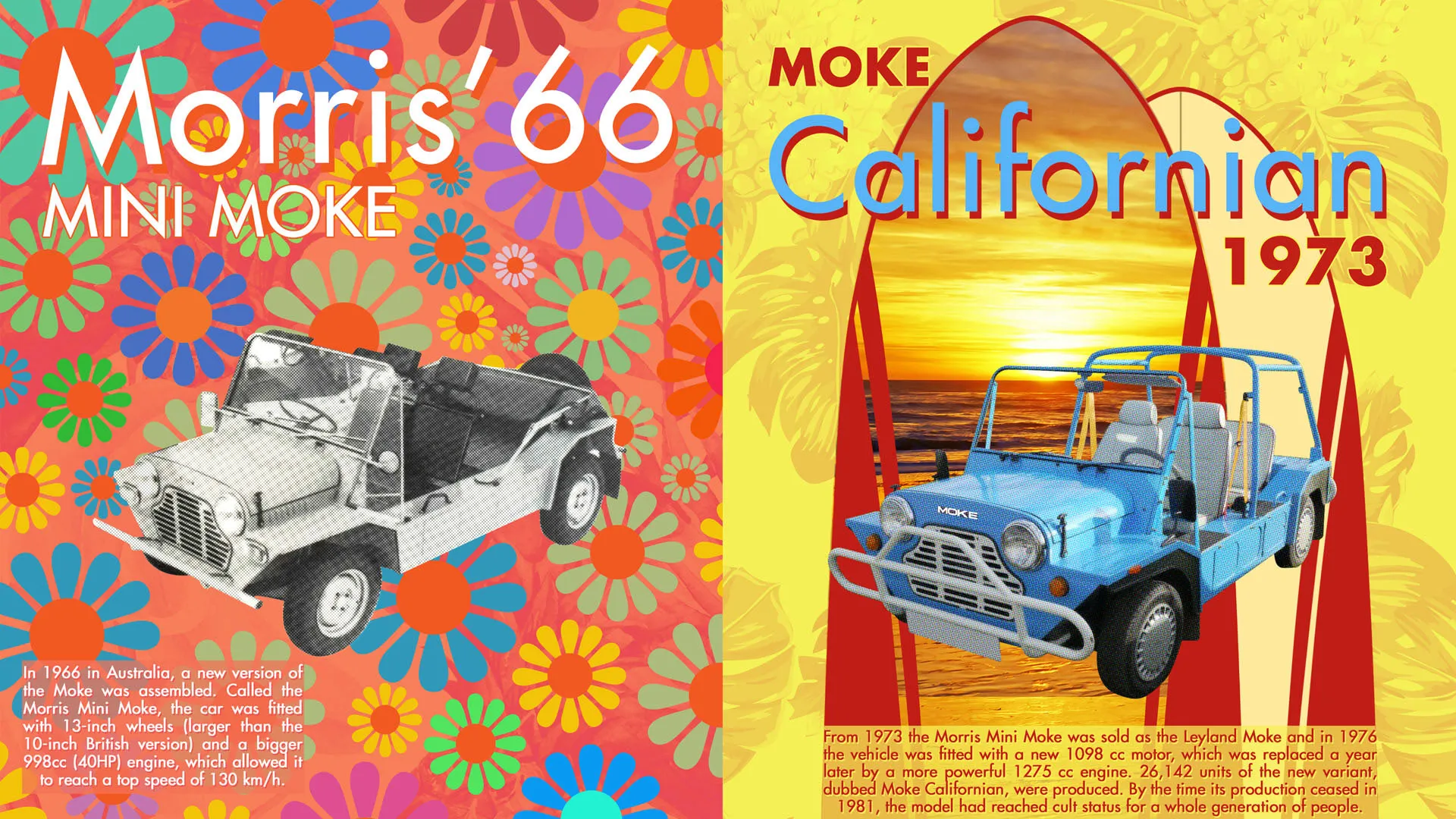

You must be logged in to post a comment.